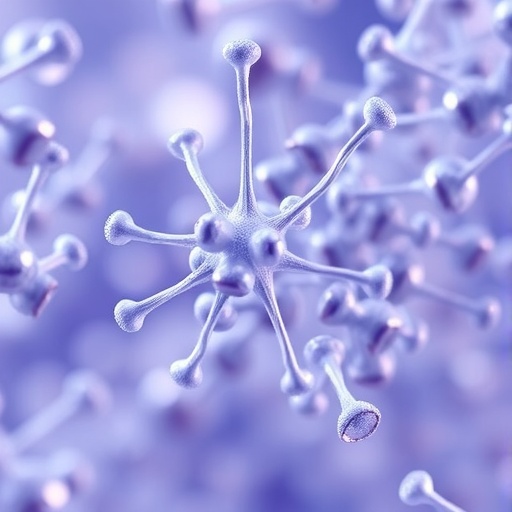Particle vision analysis (PVA) is gaining traction as a transformative approach at the nexus of artificial intelligence and microscopic imaging, offering groundbreaking advancements that stand to reshape various sectors, from pharmaceuticals to nanomanufacturing. In a recent comprehensive review published in the esteemed journal Engineering, the authors shed light on how PVA has the potential to accelerate discovery, enhance quality control processes, and advance sustainability in production methods. As industries strive to optimize performance and ensure safety while maintaining ecological integrity, PVA embodies a promising frontier of innovation.
Central to the relevance of particle vision analysis is the understanding that the behavior of particles at a microscopic level is essential to determining the performance characteristics of materials and processes. The comprehensive review addresses long-standing challenges related to image analysis within this field, illuminating the ways in which AI-based PVA can alleviate these issues. By surveying the latest advances in computer vision technologies, the authors introduce a wealth of methods—including classification, detection, segmentation, tracking, and super-resolution—that are poised to revolutionize laboratory and production line applications.
PVA is not merely an academic exercise; it is being actively applied in real-world settings where electron and optical microscopy aid industries such as biomanufacturing and pharmaceuticals. As companies and researchers deploy these advanced imaging techniques, the capacity to provide rapid and precise insights becomes crucial. The review’s discussion contributes to a broader understanding of how these technologies integrate into existing sectors and push boundaries, ultimately leading to tangible improvements in production efficiency and product quality.
In addressing the complexities of particle analysis, the authors present a framework that offers a practice-oriented map of PVA, intertwining core computer vision tasks with microscopy workflows. This organizational approach provides clarity to researchers and practitioners alike, detailing existing methods while spotlighting open-source tools and repositories that can be utilized within laboratory environments or inline inspection systems. Such resources empower professionals by offering practical strategies to achieve real-time feedback geared toward optimization of various processes.
Illustrative examples from the study reveal the diverse applications of AI-assisted microscopy in various contexts, including automated defect inspections in pharmaceutical ampoules and online monitoring of particle size on conveyor belts. Each representative case exemplifies how this technology can not only enhance precision but also minimize waste, thereby significantly shortening the development cycles that typically characterize the transition from nanoscale discovery to large-scale production. Such advancements are vital as they directly contribute to improved operational efficiencies across industries.
Technical discussions within the review highlight not just the potential of PVA but also its evolving nature. Innovations are being made to streamline data and annotation processes while elevating performance benchmarks. Techniques such as prompt-based segmentation via the segment anything model (SAM), as well as open-vocabulary detection approaches using tools like contrastive language-image pretraining (CLIP) and Grounding DINO, illustrate the breadth of possibilities. Fast detectors like You Only Look Once (YOLO) and Mask Region-Based Convolutional Neural Networks (Mask R-CNN) are also pivotal, enabling rapid analysis of complex imagery that characterizes microscopic environments.
One standout advancement discussed in the review is a zero-shot deconvolution model, which has achieved a remarkable enhancement in fluorescence microscopy resolution—exceeding 1.5-fold—without necessitating extensive training data. This innovation signifies a shift toward more efficient methodologies that can expedite research without the impediments of traditional prerequisites. The authors also underscore the significance of leveraging large pretrained models, few-shot learning techniques, and retrieval-augmented generation, which can extend the capabilities of scientific analysis even further.
The concept of a “discovery-to-optimization” loop is described in the paper as a significant paradigm for smart manufacturing. This framework encompasses a holistic view that starts with exploratory tasks, such as drug or material screening, and transitions through imaging and artificial intelligence analysis. The loop culminates in feedback mechanisms that refine both experimental setups and production conditions. This integral connection illustrates how microscopic insights can catalyze macroscopic enhancements in production efficiency and sustainability.
However, despite the promising advancements heralded by PVA, the paper does not shy away from addressing key challenges within the field. Issues surrounding particle diversity, the prevalence of noisy environments, and the computational demands posed by high-resolution imaging cannot be overlooked. The authors articulate priorities for overcoming these hurdles, advocating for standardized tools, efficient computational frameworks, and robust cross-modality adaptations. Notably, they pinpoint transfer learning and few-shot methodologies as viable near-term solutions destined to enhance the broader implementation of PVA.
To bridge the gap between academia and industry, the review culminates in a resource-rich closing. The authors provide a consolidated list of references, tools, and a public code repository to empower researchers and industry practitioners. By offering accessible resources, they lay the groundwork for implementing particle vision analysis in experimental contexts and industrial workflows alike, fostering an environment where innovation thrives.
In summary, the article presents a compelling look at how particle vision analysis stands at the forefront of AI-driven advancements in various sectors. Through meticulous examination and insightful observations, the review not only elucidates the transformative potential of PVA but also equips stakeholders with the knowledge and resources necessary to embrace this burgeoning field fully. With sustainable production becoming increasingly central to industry standards, PVA offers a unique lens through which to navigate the complexities of contemporary manufacturing challenges.
The full text of the research paper is available through the journal Engineering, highlighting the breadth of research and applicability of particle vision analysis across various fronts, indicating a significant paradigm shift in how industries might approach particle-based challenges moving forward.
Subject of Research: Particle Vision Analysis in Microscopic Imaging
Article Title: Future Manufacturing with AI-Driven Particle Vision Analysis in the Microscopic World
News Publication Date: 12-Aug-2025
Web References: Engineering Journal
References: Full Text
Image Credits: Guangyao Chen, Fengqi You
Keywords
Applied sciences and engineering




